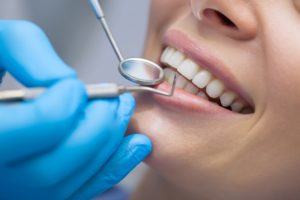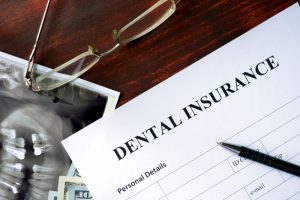I think that there are times when patients are not sure what we are trying to do. I will try to clarify what we as the dental team are trying to accomplish.
When we examine a patient, either for the first time,at recare visits or during an emergency visit, there are several things that should be considered. First, an easy one, pain. One of our priorities is to determine the causes of pain that a patient reports. Frequently we will question the patient to help identify the source. Is pain constant? Temperature related? What is the duration? How long have you noticed the discomfort. These questions along with other diagnostic aids such as visual examination and dental xrays will aid us in determining ways to eliminate pain.
A second area we must address is the elimination of disease. There are several types that we see frequently. Caries, or more commonly dental decay. Periodontal disease, or gum disease is also common. Occlusal disease is the loss of tooth structure through excessive wear, chemical(ie acid) attack or trauma. And certainly we must be on the lookout for any soft tissue changes that could be cancerous.
And finally, we must check the health of the jaw joint or TMJ’s.
So with this information, what are the goals of treatment. For me, there are three. 1. Eliminate disease. 2. Restore form and function. 3.Create stability. In upcoming posts, I will break down these three goals and relate them to what we see during our examinations.


 Your toothbrush and floss are crucial to keeping your teeth and gums healthy, but did you know routine dental care is equally important? The American Dental Association recommends everyone has a cleaning and checkup at least twice a year; however, only 1 in 5 adults have visited their dentist since the pandemic. Although you’re spending more time at home, skipping a dental cleaning in North Andover can leave a lasting mark on your smile. Here are 4 reasons you don’t want to put off your routine visit.
Your toothbrush and floss are crucial to keeping your teeth and gums healthy, but did you know routine dental care is equally important? The American Dental Association recommends everyone has a cleaning and checkup at least twice a year; however, only 1 in 5 adults have visited their dentist since the pandemic. Although you’re spending more time at home, skipping a dental cleaning in North Andover can leave a lasting mark on your smile. Here are 4 reasons you don’t want to put off your routine visit.
 A surefire way to ruin an otherwise nice day is for a dental emergency to suddenly emerge. In addition to disrupting your normal way of life, it can also cause some other serious problems. How can you recognize the symptoms of the developing issue, soon, so you can get the help you need and prevent any unnecessary suffering? Continue reading to get some helpful tips from a local dentist.
A surefire way to ruin an otherwise nice day is for a dental emergency to suddenly emerge. In addition to disrupting your normal way of life, it can also cause some other serious problems. How can you recognize the symptoms of the developing issue, soon, so you can get the help you need and prevent any unnecessary suffering? Continue reading to get some helpful tips from a local dentist.
 If there’s one thing that all kids love (and most adults if we’re being honest), it’s free candy. In fact, you’ve probably already bought yourself a big bag in preparation for all the kids who are going to be knocking on your front door and showing off their spooky costumes. If there’s one nightmare you should avoid though, it’s chronic tooth decay and cavities. If you want your child to avoid chronic tooth decay and cavities by the time the next holiday rolls around, consider these essential tips from a
If there’s one thing that all kids love (and most adults if we’re being honest), it’s free candy. In fact, you’ve probably already bought yourself a big bag in preparation for all the kids who are going to be knocking on your front door and showing off their spooky costumes. If there’s one nightmare you should avoid though, it’s chronic tooth decay and cavities. If you want your child to avoid chronic tooth decay and cavities by the time the next holiday rolls around, consider these essential tips from a 